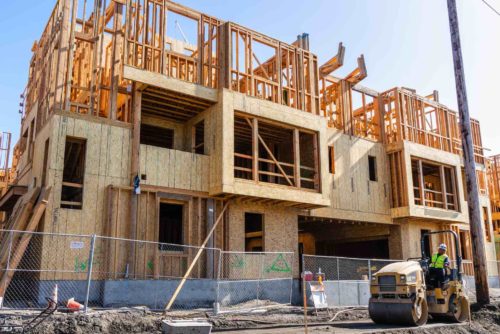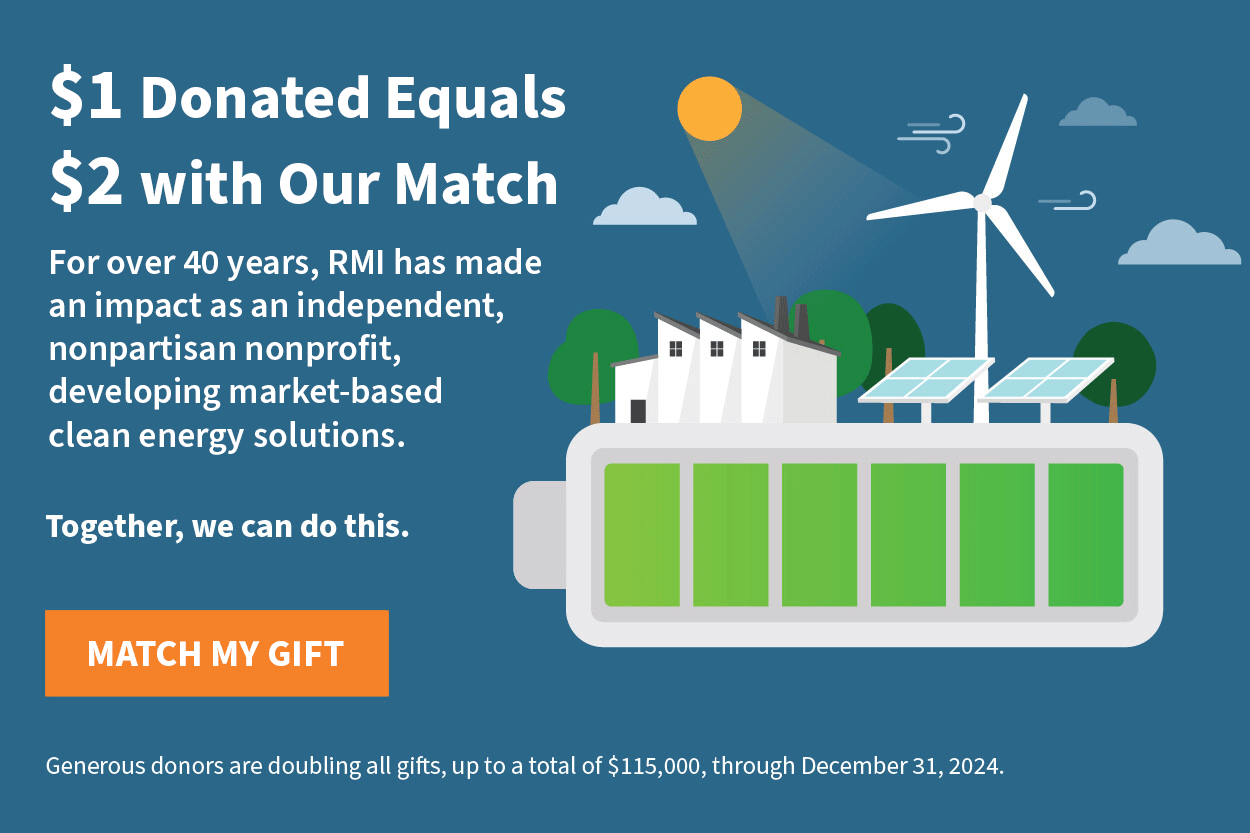
We Have New Leadership and a New Year—We Need New Housing, Too
We must build more housing to lower emissions, improve equity, and bolster the economy.
2021 remains a year of excitement despite a tumultuous start. With a new federal administration set to take office, vaccine distribution picking up, and the economy starting to re-gain momentum, Americans are eager to get back to their pre-pandemic routines. This year presents many new opportunities, including the opportunity for leaders to accelerate much-needed climate action. Housing development can and should be a key part of our climate strategy and can simultaneously contribute to economic stimulus and a push toward improving equity.
President-Elect Joe Biden is nominating key positions to his cabinet that will greatly influence climate policy, including the recent naming of former EPA Director Gina McCarthy as climate czar, South Bend Mayor Pete Buttigieg as transportation secretary, and former Michigan Governor Jennifer Granholm as energy secretary. These appointments produced a great deal of enthusiasm in climate and transportation circles, but what remains unknown is how these cabinet members will utilize housing as a climate tool.
In his campaign climate plan, Joe Biden directly addressed infill and multi-family housing as an opportunity to fight sprawl, improve affordability, and reduce emissions. This is a first for an incoming president, and it’s a policy that must remain intact going forward.
Many Problems in One
From the Bay Area to Birmingham to Boulder— in rural and urban communities—our country’s broken housing policies have hampered economic opportunity and produced decreasingly affordable options for Americans. Building out instead of up, barriers to rental construction, and antiquated zoning requirements that make new construction expensive and inefficient are a few of the reasons that the United States faces a major shortage of units. This shortage drives both rents and home prices up dramatically.
America’s affordable housing shortage is at the center of multiple crises—all of which disproportionately hurt our poorest, most historically disadvantaged:
Economic: The COVID-19 induced recession and the job losses it caused combined with rapidly rising rents have led to the inability of many to continue paying rent, causing an eviction crisis. For those that can still make rent, the increased costs have forced flight to cheaper, poorer-quality housing further away from economic opportunity and essential services.
Health: Research has shown that COVID-19 is especially threatening to people whose lungs are exposed to pollution—both outdoors (housing next to highways and fossil fuel facilities) and indoors (including cooking and heating emissions and poor seals that do not protect against external air pollutants).
Climate: The relationship between where housing is built and how it impacts transportation receives insufficient attention in the climate discussion as our housing system wreaks drastic environmental damage. Housing is inextricably tied to transportation, the single largest contributor to carbon emissions in the United States, and transportation emissions continue to increase. The housing system also forces many into vulnerable positions as, to avoid building up, housing is often built in areas of extreme risk where exposure to flood and wildfire is high.
The Housing Deficit
A recent study by Freddie Mac found that 29 states have a housing deficit and estimates the nationwide housing shortage at more than 3.3 million units. The study concludes that:
This shortage is worse for the most vulnerable. A recent analysis of the NYC Housing Connect System that places low- and middle-income community members in housing found that between 2014 and 2019, there were 314 applications per unit.
Most Americans take on a heavy financial burden to pay their rent or mortgage, and housing costs have far outpaced the growth of wages. The US Census Bureau reported that an estimated 40.6 percent of renters spent 35 percent or more of their household income on rent and utility bills. Budgets for education, school, healthcare, and other necessities suffer to make sure the rent is paid. The rent burden has been exacerbated by COVID-19, as the pandemic and accompanying economic crisis have battered local businesses with limited financial reserves and entire industries, including travel, dining, and entertainment.
Comparing November unemployment data to February levels, the United States is down approximately 10 million jobs. And sooner or later, the limited additional unemployment benefits in the latest stimulus will expire, leaving low-income families particularly exposed.
The US housing system must be improved—and fast. We need to focus on policies now to allocate resources toward putting Americans back to work by building housing in the right way and the right places. Housing development should prioritize health; access to jobs, essential services, and green space; low-carbon construction materials and methods; carbon-free operations (efficiency, electrification, and on-site renewables); and minimizing sprawl and the exposure to disaster risk that goes with it—especially wildfire and flooding.
Housing policy is also climate policy, and adding housing units can reduce emissions. When addressing housing, much of the climate community focuses on advanced construction materials, energy retrofits, and building electrification strategies, all of which are needed. Yet, as the United States faces a climate crisis, leaders cannot create development patterns that exacerbate driving, increase air pollution, and unfairly burden lower- and middle-income communities. The same land use policies that created sprawling, auto-dependent communities continue to exacerbate economic disparities, racial inequity, and public health problems. COVID-19 and the recent protests against institutional racism and police brutality have made these disparities painfully obvious.
Build Back Stronger by Building Smart in the Right Places
There is arguably no better way to “build back better” than to build where we need it most and in the right way—and as soon as possible. This period of economic uncertainty will undoubtedly hamper real estate development, but nothing prevents building housing where we need it more than the exclusionary zoning regulations that not only block new development, but prohibit the repurposing of existing, underutilized, and vacant building stock.
It’s time for the community of climate advocates and practitioners to turn their attention to zoning. Removing exclusionary zoning requirements would result in a step-change in low-carbon, location-efficient, infill development that would facilitate neighborhoods that are mixed use and mixed income. Every antiquated auto-centric or anti-density regulation on the books—height restrictions, minimum parking and lot requirements, mandatory setbacks, accessory dwelling unit (ADU) bans, and single-family zoning are some major regulations—produce the effect of preventing housing from being built where it is needed.
Housing not built near areas of opportunity that include employment, healthcare, and education means housing in locations farther away, requiring more miles to drive and more emissions. It also means less construction, design, trade, and material production jobs that pay a living wage. New construction also will infuse demand into materials industries broadly. What better way to stimulate the economy than to remove barriers to housing development and the jobs it will require?
This will not necessarily be easy. Housing—specifically zoning—is a controversial topic among even the most progressive of voters. After all, many self-proclaimed progressives are commonly found in city council meetings across the country, waging a war to protect suburbia and single-family zoning. These opponents of growth reference problematic terms like neighborhood-character, make bold claims about egregious environmental impacts, and—when appealing to lower-income audiences—stoke fears of gentrification.
Yet zoning reform should be a non-partisan issue. Many conservatives want to limit regulations that affect the bottom line of developers and inhibit property owners’ decisions. For liberals, zoning reform would address equity and the environment by enabling greater supply of affordable housing and more efficient use of land. To be clear, a single-family house is not in and of itself a problem but mandating that so much our cities’ land cover—over 90 percent in some cases—should be zoned and frozen in time as such produces considerable economic, environmental, and social ills.
Many Paths, One Goal
The implications of our zoning policies extend beyond housing. The single-use development patterns that mark our cities disconnect residential areas from commercial areas and prevent walkable access to the most basic of needs. We have eradicated the main street and zoned grocery stores, schools, doctors’ offices, parks, and other vital services out of our neighborhoods.
To repair these problems, we need to start bringing basic needs back into our neighborhoods. An increasingly popular concept, the 15-minute neighborhood, seeks to create a neighborhood where residents can easily and quickly access critical services and amenities without the use of a car. Most recently, Paris Mayor Ann Hidalgo pledged to make the City of Light a 15-minute city by repurposing space previously dedicated to cars as safe routes for pedestrians and cyclists. In America, considerable changes to traditional zoning are needed to move this from a concept to a widely implemented strategy.
Local governments are responsible for creating or reforming zoning regulations, but the federal government is also capable of directly incentivizing these changes. One example is a much-discussed strategy of granting the Department of Housing and Urban Development the power to allocate funding through the Community Development Block Grant (CDBG) program. In this case, the CDBG would serve as a conduit for local governments to access funds with the stipulation that the governments initiate comprehensive land use reform aimed at enabling infill, mixed-use development, and location-efficient housing. However, this may alone be insufficient, therefore the federal government should require grant recipients to report on their progress toward eliminating exclusionary policies and implementing affordable housing policies.
Think Globally, Act Locally
The scope of the housing crisis in the United States is large, but community-level action can yield results. As we enter a new year, we should turn our attention to local leaders that make highly consequential decisions for our cities. Countless zoning and housing decisions are made in cities every day. Overlooked for too long, local housing can be a lever for fighting climate change. To deal with the economic, climate, and health challenges that we face, “Swiss army knife” type solutions that combat multiple major challenges are what is needed. Building housing the right way and in the right locations is the first place to start.
